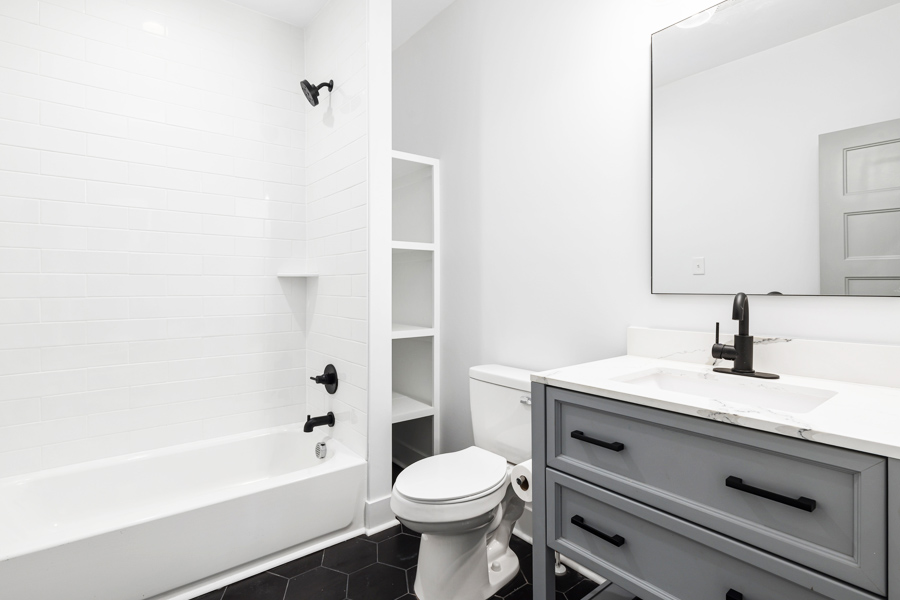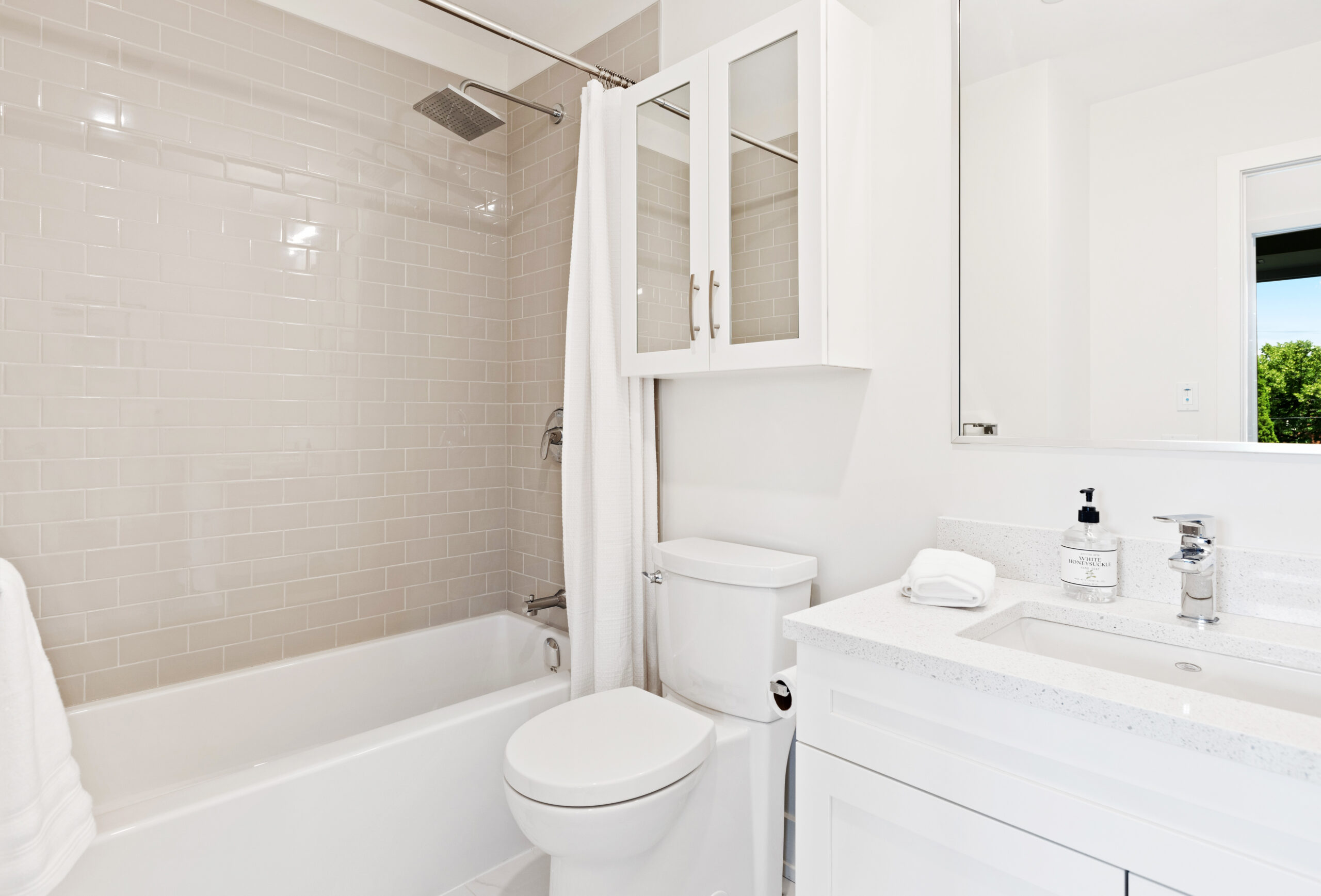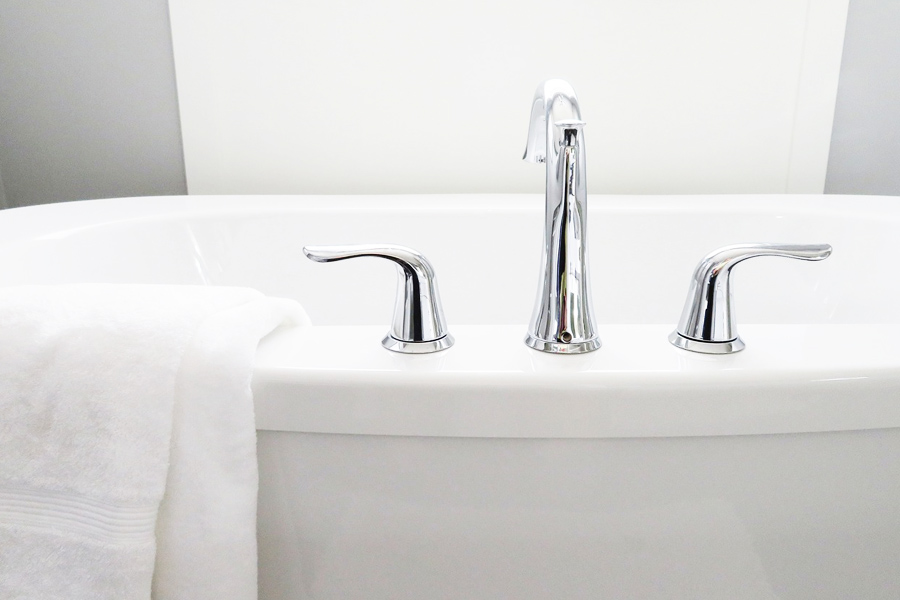Remodeling a bathroom is a fun and easy way to update and refresh your home. There are so many great bathroom ideas and interesting and unique bathroom decor out in the world to get you started. But, before you get started on your bathroom overhaul, you must think ahead and plan accordingly. Our step-by-step how to remodel a bathroom remodel guide is here to assist you through every stage of the bathroom renovation process.
Bathroom Remodel Preparation
This initial stage of the planning process for your new bathroom requires you to set the scope and budget of your project. During this stage, you should also choose a contemporary design that fits your budget and skills. Your finalized design should be a coherent culmination of all your bathroom decor ideas.
Consider the ultimate scope of your remodel. Are you going to gut the entire bathroom? Or, are you going to remove select installations, like the toilet and vanity, to add updated pieces.
Setting the scope of a remodel helps you make intelligent financial decisions and not go over budget. It also helps to nail down a cohesive design effort and style. There is nothing worse than going through a lengthy remodel, only to find that all your new fixtures and hardware clash with each other.
Take the time to plan out how you want your new bathroom to look. While you are doing this, consider:
- Fixtures and hardware. Will you be adding all-new fixtures, like a toilet, bathtub, shower or vanity to your bathroom? The more new fixtures you add, the more time and money your remodel will take.
- Color. One of the most important aspects of a remodel. Now is your chance to do away with an outdated color scheme and add your personalized design. Just make sure all of your chosen colors go great with each other.
- Utilities. Know the location of your water lines and plan around those constraints. Also, know where your electrical is for outlets and light switches and be familiar with your local building code.
- Space usage. Your new bathroom layout should be straightforward to navigate and efficiently utilize space to maximize storage potential. Additional shelving or cabinets can help elevate your bathroom storage solutions to the next level.
Setting The Budget
Having a budget in mind going into a bathroom remodel is one of your most powerful tools. Without a budget or any sense of the total cost of a bathroom redesign, the expenses for your renovation project will rapidly spiral out of control.
If you have trouble aligning your budget and ideas, consider some more affordable solutions like:
- Painting or refinishing a wood floor
- Replacing old cabinet hardware with new
- Installing a prefab shower
- Resurfacing a bathtub
- Utilizing low-cost look-alike materials and fixtures
These are all great ideas for saving money. And, they could be the difference between getting the bathroom of your dreams and blowing up your bank account.
Tool List
The bigger the remodel, the chances are the more tools you will need. Hopefully, you have most of the essential tools already, but if you do not, here is a handy list:
- Hammer
- Measuring tape
- Putty knife
- Chalk line
- Utility knife
- Vice grips or Channellock pliers
- Caulking gun
- Power drill and driver
- Extension cord
- Gloves
- Safety glasses
These are just some of the tools you may need for your remodel. If you are doing a tile floor, backsplash or shower surround, you need specialized tile tools like a tile saw, flooring trowel, grout float and a way to mix your grout and thin-set mortar.
Fortunately, most specialized tools are available to rent at most home improvement stores. Be aware, though, that rental costs quickly add up.
Starting The Remodel
Now that you have your budget and design in place, it is finally time to start your remodel. Most remodels start in one place: The demolition.
Demo Your Bathroom
One of the most fun and perhaps even cathartic experiences, the demo of your old bathroom, is your opportunity to unleash all your pent-up frustrations and anger on your old grungy bathroom.
Most demos begin by disconnecting and removing the toilet, vanity, bathtub and shower. Take your time and make sure your water is off before removing these installations.
Next, if you are redoing your walls, remove all the drywall and insulation if necessary.
Now it is time to tear up the floor if you are putting down new flooring. If you are replacing the trim, tear it out however you want. But, if you plan to use the old trim, be careful not to destroy it while removing it.
Clean up all the debris. The cleaner your demolished bathroom is, the easier it will be to install everything moving forward.
Install Your New Bathroom
During this phase of your remodel, you start to see your ideas come together. Start by installing your new shower or tub. Take care to repair any rotted subfloor or other water damage you may find.
After installing your shower or tub, tackle the lighting and electrical outlets and switches. Place GFCIs where you need them and line everything up with your new vanity and fixtures.
Get drywall hung and finished before proceeding. Then, lay your new floor. Take the time to properly layout the floor. You do not want to have to pull it up if you find out halfway through that your layout will not work.
Finish your bathroom by installing the new vanity, medicine cabinets, shelving and painting, and checking off any other finishing touches like the baseboards and trim.





